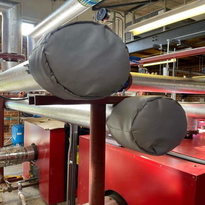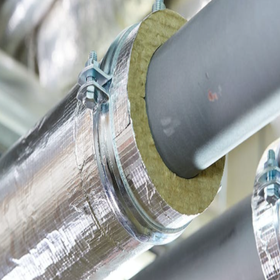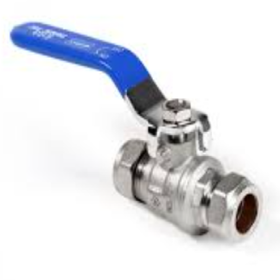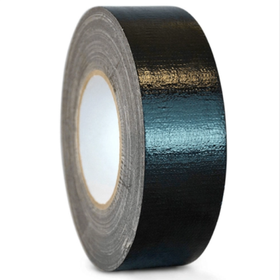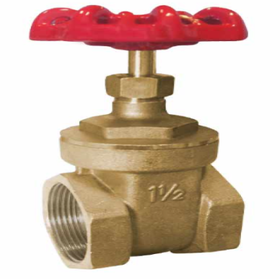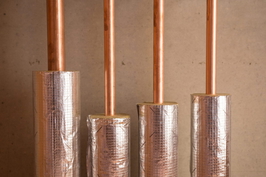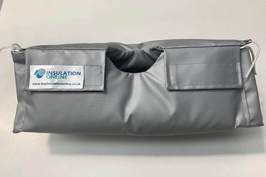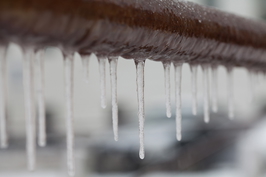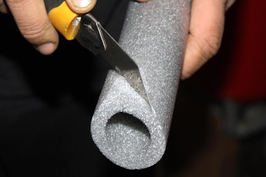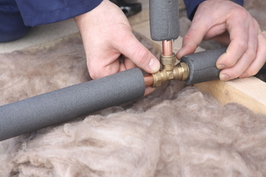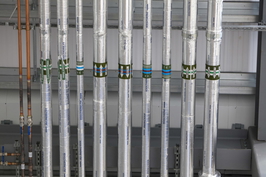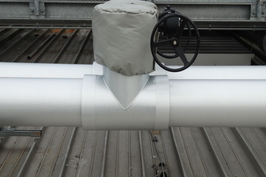Similar Categories
Materials and Construction of Blank End Flange Jackets
The materials and construction of blank end flange jackets are designed to provide effective insulation while withstanding high temperatures. These jackets often utilise mineral wool or fibreglass for thermal insulation, as both materials prevent heat from escaping. The outer layer is typically made of silicone-coated fibreglass cloth, which offers durability and resistance to extreme heat. Constructed with high-quality silicone glass cloth for weatherproofing and long-term performance, some designs incorporate glass fabric for both the inner and outer layers, enhancing strength and stability. The central insulation layer might also include mineral fibre for improved heat retention. Modern jackets are asbestos-free, ensuring safety for users and the environment. Generally, they're around 2 inches thick to offer adequate insulation. They're tailored to fit various flange sizes and are easy to install with fasteners such as Velcro or pull cords.
Temperature Range and Performance Capabilities
Blank end flange insulation jackets are designed to operate within specific temperature ranges, depending on the materials used. Some materials can withstand extremely high temperatures, up to 1200°C, while others are suitable for cold environments as low as -260°C. These temperature limits are based on the material's ability to maintain its structural integrity and insulative properties under thermal stress. Understanding these limits helps ensure the jackets perform reliably and safely in various industrial conditions across the UK.
High-Temperature Tolerance
High-temperature tolerance is a key factor in the effectiveness of blank end flange insulation jackets. These jackets are made from materials that can withstand various temperature ranges, ensuring peak performance in demanding environments. For instance, fibreglass insulation can handle temperatures up to 540°C, making it suitable for numerous industrial applications. Some high-temperature materials, such as Superwool, can tolerate environments ranging from -260°C to 1200°C, providing flexibility for extreme conditions. Materials like calcium silicate offer both high heat resistance and chemical resistance, enhancing durability. Additionally, depending on the insulation thickness, jackets can be rated for specific temperature limits, such as 40g insulation handling temperatures up to 230°C. The choice of material is critical to ensuring the jacket maintains its insulating properties over time under high-temperature conditions.
Insulation Effectiveness Range
Insulation jackets are designed to perform effectively across a wide range of temperatures, helping equipment maintain steady operating conditions. They improve temperature stability by keeping heat within the system, which reduces thermal stress on components. This augments energy conservation, lowering heat loss and boosting overall efficiency.
The jackets also prevent moisture buildup, which helps reduce the risk of corrosion. Additionally, they provide a safety barrier, minimising the chance of burns from hot surfaces. Their environmental versatility allows them to be used in diverse conditions, resisting moisture and weather effects.
These jackets can adapt to different sizes and complex piping systems, ensuring consistent thermal performance. Suitable for various industrial applications, they support equipment longevity and workplace safety, making them an essential part of modern thermal management in the UK.
Material Durability Limits
Materials used in thermal insulation jackets are selected for their ability to withstand specific temperature ranges while maintaining performance. Silicone-coated fibreglass cloth, for instance, can endure high temperatures, but each material has its limits. These limits ensure safety, durability, and long-term effectiveness. The temperature range of materials is a critical factor in their selection for various applications. Some key points include:
-
Silicone-coated fibreglass can typically handle temperatures up to 800°F (427°C), making it suitable for many industrial environments.
-
Mineral wool and fibreglass combinations provide enhanced insulation, supporting performance in medium to high-temperature settings.
-
Nomex cords are used for low to medium temperatures and are fire-retardant, adding safety features.
-
Material limitations, such as environmental exposure and operational conditions, can impact durability, necessitating regular checks and maintenance.
Custom Sizing and Fit for Flange Insulation
Due to the wide variation in flange sizes and shapes, custom sizing and fitting are essential for effective insulation solutions. Manufacturers provide flange insulation kits and jackets up to 24 inches as standard, with custom sizes available upon request.
These kits are designed to accommodate all ANSI, API, AWWA, and other flange standards, including non-standard or unusual shapes. Sleeves and washers are sized to correspond with both standard American bolt sizes and unique configurations, ensuring a secure fit.
Materials and components are specifically tailored to match individual flange profiles, pressure ratings, and environmental conditions. Custom orders come with detailed documentation, including size, material, and rating.
Proper sizing is critical in preventing leaks and promoting optimal thermal and electrical insulation, thereby ensuring the long-term reliability of pipelines and equipment.
Step-by-Step Installation Procedures
Before beginning the installation of a blank end flange thermal insulation jacket, proper preparation is essential to ensure a smooth and effective process.
Firstly, measure the flange and pipe dimensions accurately to select the correct jacket size. Next, inspect all flange and pipe surfaces, ensuring they're clean and free of debris to promote proper adhesion. Proper measurement and inspection help prevent installation errors. Verify that the installation kit contains all necessary fasteners, such as Velcro flaps and pull cords. Finally, gather all required tools and safety gear to prevent delays or accidents during the setup.
Consider these steps for a seamless process:
- Confirm measurements match jacket specifications.
- Ensure surfaces are thoroughly cleaned.
- Check that all fasteners are included in the kit.
- Prepare the workspace with tools and safety equipment.
Maintenance and Durability Aspects
Regular maintenance of blank end flange thermal insulation jackets is essential for ensuring their continued effectiveness and longevity. Inspections should be conducted routinely to identify any signs of wear, tears, or damage, thereby ensuring the jacket continues to provide adequate insulation. Maintenance helps prevent heat loss Fasteners such as Velcro flaps and pull cords should also be checked and tightened as necessary to prevent heat loss and maintain system efficiency. Cleaning with a damp cloth will help remove dust and dirt build-up that could adversely affect performance. Adhering to manufacturer guidelines during maintenance is crucial to avoid unnecessary damage and to extend the jacket's lifespan. Durable materials like silicone glass cloth are designed to withstand harsh environmental conditions and high temperatures, confirming their long-term durability. Proper upkeep ensures that these jackets perform reliably, reducing the need for costly replacements and maintaining their thermal efficiency over time.
Industrial Applications and Benefits
Industrial applications in the UK benefit significantly from blank end flange thermal insulation jackets, as they help improve overall system performance and safety.
These jackets reduce heat loss from flanges, maintaining equipment at stable temperatures and enhancing energy efficiency. They're constructed from high-quality materials such as silicone-coated glass fibre cloth, supporting use up to 230°C, and feature 50mm insulation for improved heat retention.
- Protect flanges from environmental damage and corrosion
- Reduce energy waste, thereby lowering operational costs
- Fit various sizes with customisable features
- Weatherproof design suitable for harsh conditions
Moreover, these jackets prevent moisture and chemicals from contacting metal surfaces, thereby extending the life of equipment. Manufacturers offer customizable options to ensure perfect fit and compatibility. Their protective and adjustable design offers a reliable solution, supporting smooth operations and making them an essential addition to any industrial setting in the UK.
Safety Considerations for High-Temperature Environments
High-temperature environments in industrial settings pose significant safety challenges that require careful attention. Workers need proper training to understand risks and follow safety protocols.
Recognising hazards such as surfaces above 60°C (140°F) helps prevent burns, especially on metallic surfaces that conduct heat quickly. Insulation systems should maintain surfaces below 95°C (203°F) for safe contact, and the Health and Safety Executive (HSE) mandates protection around heated surfaces. Proper insulation can significantly reduce heat transfer and enhance safety measures.
Personal protective equipment (PPE), such as heat-resistant gloves and suits, is essential, but workers must also understand the limitations of PPE. Good work practices and regular maintenance of PPE ensure safety.
Additionally, compliance with regulations like British Standards helps prevent accidents. Adequate ventilation and well-planned workspaces further reduce risks, creating a safer environment for everyone involved.
Selecting the Right Insulation Jacket for Your Needs
Choosing the right insulation jacket depends on material compatibility and durability, ensuring it can withstand the environmental conditions and equipment it covers.
Accurate sizing and fit are essential for effective thermal performance and ease of installation.
Furthermore, understanding the temperature range and specific application needs aids in selecting jackets that provide safe, long-lasting protection.
Material Compatibility and Durability
Selecting the appropriate insulation jacket is heavily influenced by material compatibility and durability, ensuring it performs effectively over time.
It's crucial that the materials utilised in the jacket correspond with those in the piping system to prevent chemical reactions and corrosion. High-quality silicone-coated glass fibre cloth serves as the primary fabric, offering weatherproofing and resistance to harsh environments.
The construction of the insulation, which includes sewn seams, Velcro flaps, and pull cords, enhances its durability and ease of maintenance. To ensure long-lasting performance, consider the following factors:
- Compatibility with piping materials to avoid chemical reactions
- Resistance to operational temperatures up to 230°C
- Chemical resistance to industrial media
- Protection against abrasion and wear for an extended lifespan
These features promote reliability, safety, and efficient energy conservation in industrial applications within the UK.
Size and Fit Accuracy
Ensuring the correct size and fit of an insulation jacket is crucial for optimal thermal performance and safety. Blank End Flange Insulation Jackets are available in sizes ranging from 1/2 inch to 12 inches, providing a broad selection to accommodate various pipe diameters.
Custom options are also available for precise fits on different flanges, which helps maintain thermal efficiency. Proper sizing ensures that the jacket fits snugly around the flange, minimising heat transfer and preventing any gaps.
Regularly inspecting the fit and fastening methods, such as Velcro flaps and pull cords, ensures that the jacket remains secure during use. Accurate measurements of the flange are essential before selecting or customising a jacket.
A proper fit not only enhances insulation effectiveness but also simplifies maintenance and adjustments, promoting safe and efficient operation.
Temperature and Application Needs
Since different industrial applications require insulation jackets to withstand varying temperature ranges, it's crucial to match the material and design to specific operational needs.
For many applications, silicone-coated fibreglass cloth jackets support surface temperatures up to 230°C (446°F), making them suitable for general piping and valve insulation.
High-temperature environments may necessitate thicker or specialised materials like mineral wool or fibreglass, which can resist temperatures up to 427°C (800°F).
Internal-use jackets are typically designed for lower temperatures, ranging from 10°C to 100°C, which makes them ideal for indoor applications.
When selecting a jacket, consider the following:
- The maximum operating temperature of the equipment
- The environment’s weather conditions
- The need for durability and flexibility
- Compliance with industry standards
Matching these factors ensures maximum thermal protection, efficiency, and safety for industrial operations in the UK.
Conclusion
Blank end flange thermal insulation jackets provide effective protection for flanges in high-temperature environments. They are customisable, easy to install, and durable, making them suitable for various industrial applications across the UK. Proper selection, installation, and maintenance ensure peak performance and safety. By choosing the right jacket, industries can enhance energy efficiency, prevent heat loss, and reduce safety risks. Overall, these jackets serve as a reliable solution for thermal insulation needs in demanding settings.
